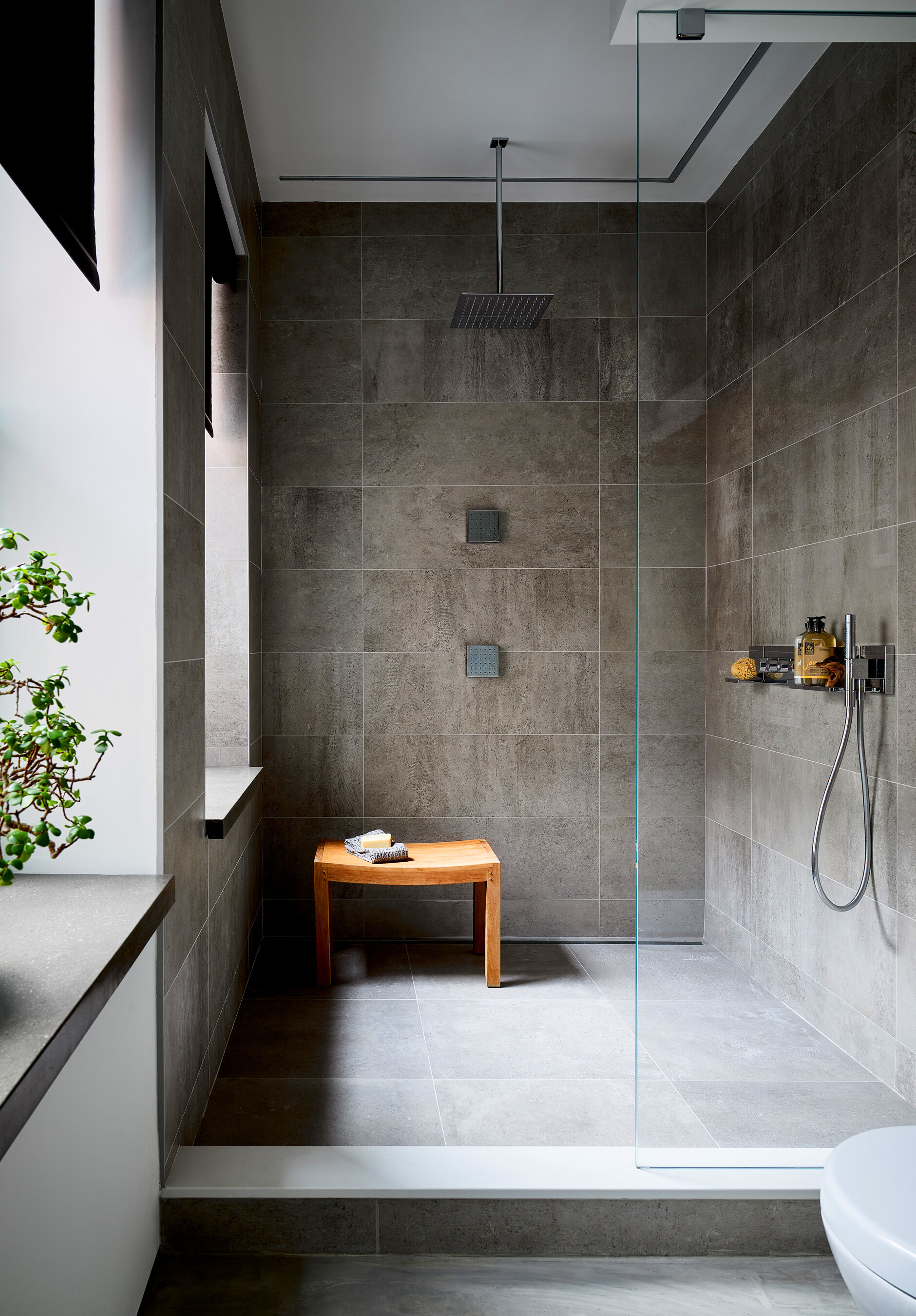What is a Linear Drain? And why we love them...
Every shower has drain - some are round and some are square - and now some are long and rectangular called a linear drain. If you’re renovating your existing bathroom or building a new bathroom, it’s a great time to consider using a linear drain. Linear drains are more efficient at draining because they collect water all along the channel’s length before draining to the single-point drain outlet. This underlying single-point drain outlet is round and probably what most of us think of when we think of a typical shower drain.
Large-format tiles continue into the shower floor. The entire bathroom floor is essentially the shower pan in this case. Water travels to the linear channel that runs along the entire back wall of the shower. In this example, there is no curb and only a partial, fixed glass wall, allowing for easy access.
Photo: Eric Roth
Components of a linear drain include:
Waterproofing that can include sheet membranes, liquid membranes that are painted on the shower walls and floor, and fabric membranes
The linear channel body or trough-like piece that collects water all along its edges
A decorative drain cover that sits in a finished shower frame; often available in several styles depending on the brand of drain – spiral or square motifs, among others – and finishes – like chrome or matte black
This Schluter KERDI-LINE linear drain kit includes an orange waterproofing fabric membrane already secured to the linear channel or trough. The channel support and coupler that secures the drain channel to the existing drain are also shown.
A Schluter floral motif drain cover and the channel cover. These are level with the tile floor.
Why Choose a Linear Drain?
Why use a linear drain? You get more flexibility with a linear drain and they are sleeker and more attractive. It catches more water along the trough and drains more efficiently. This is especially good if you have natural stone in your shower because it gets the water off the stone more quickly.
Another advantage of a linear drain is that they are best for curbless showers. Curbless showers are excellent for aging in place and ADA-compatible for someone who uses a walker or wheelchair or shower stool. Linear drains can be used in a shower with a curb, but the slope starts inside the shower.
Another advantage of linear drain is that they work well with large format tile. When you have a center drain, then you have to use small tile or mosaic to fit the slope around the drain.
Since linear drains are more efficient at draining water, there is less chance for standing water and puddles to form. Perfect if you prefer natural stone materials, like limestone, in your shower.
Photo: Eric Roth
Again, curbless showers with linear drains are a good choice for those who wish to age-in-place and those who use a wheeled walker or other mobility device in the shower. No curb to step over means easier accessibility for everyone, and more efficient drainage means standing water is less likely – also a plus for everyone.
The glass door of this curbless shower with a linear drain pivots completely out of the way to allow access for a user in a wheelchair.
Photo: Jared Kuzia
The bottom line why we love linear drains: they drain water more efficiently and we can use large format tiles on the entire floor. Bonus points for fewer grout lines!
This shower has a linear drain and a curb, so the shower floor – with large-format tiles - begins to slope toward the drain past the curb and into the shower.
Photo: Jared Kuzia
Important considerations to know and make sure your builder knows, too
If your designer specifies a linear drain in your new shower, make sure your builder knows from the outset so that what is required can be clearly communicated to the building team. Does the entire bathroom floor need to slope? Will the floor slope only inside a curbed shower? If you want to use the existing drain location in a renovation, will you need a custom linear drain channel that may need to be special ordered?
Does the builder understand the parts and pieces of the linear drain kit? Where to put the pan below the floor? These are important questions to ask. It is critical that your contractor can read a design plan that specifies a linear drain and that your plumber knows how to install one. The plumber installs the drain, but the tile installer sets the tile - they need to be on the same page. The framer has to be aware, the plumber has to be aware, and the tiler has to be aware as each one has an important role in making the linear drain work! And although it might sound complicated to the end user - the homeowner - your professional team should be familiar with all of the terminology and basic principles.
Finally, linear drains are attractive and chic. They elevate the look of any shower. We love using them in our award-winning projects.






